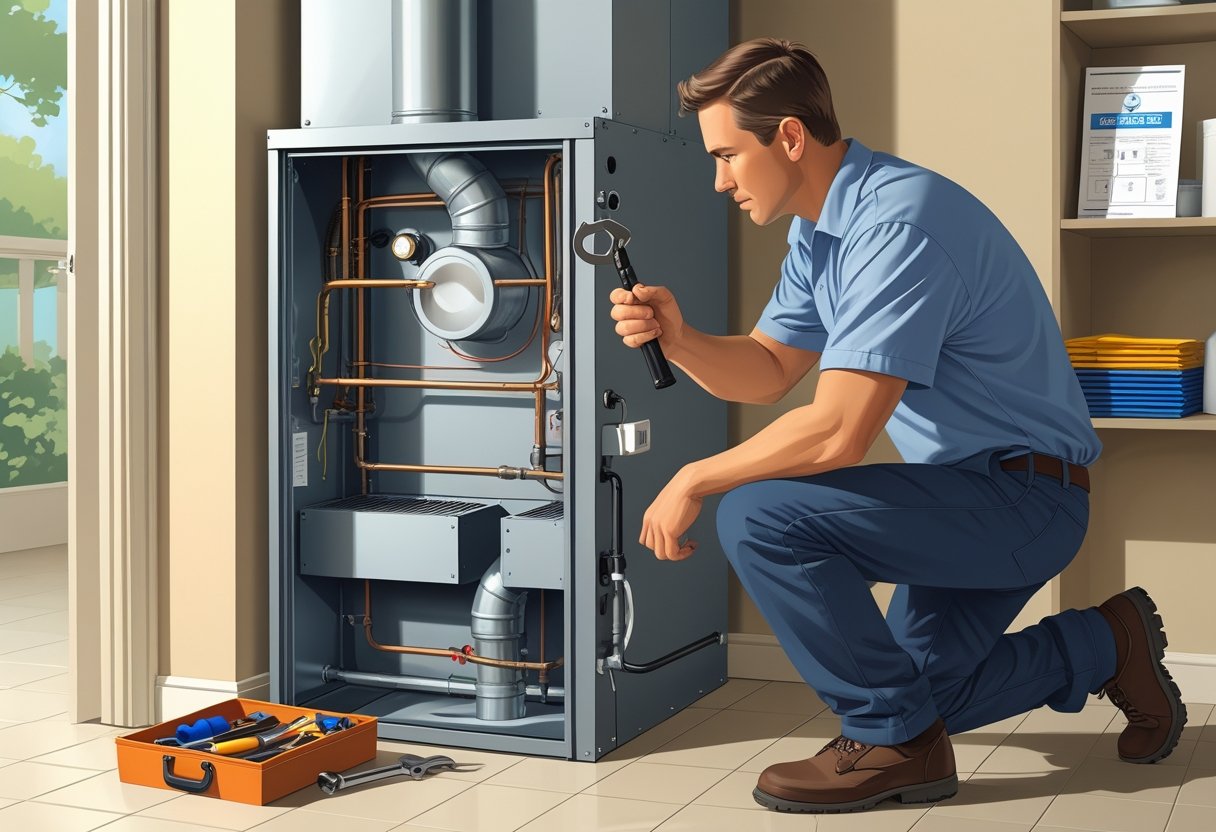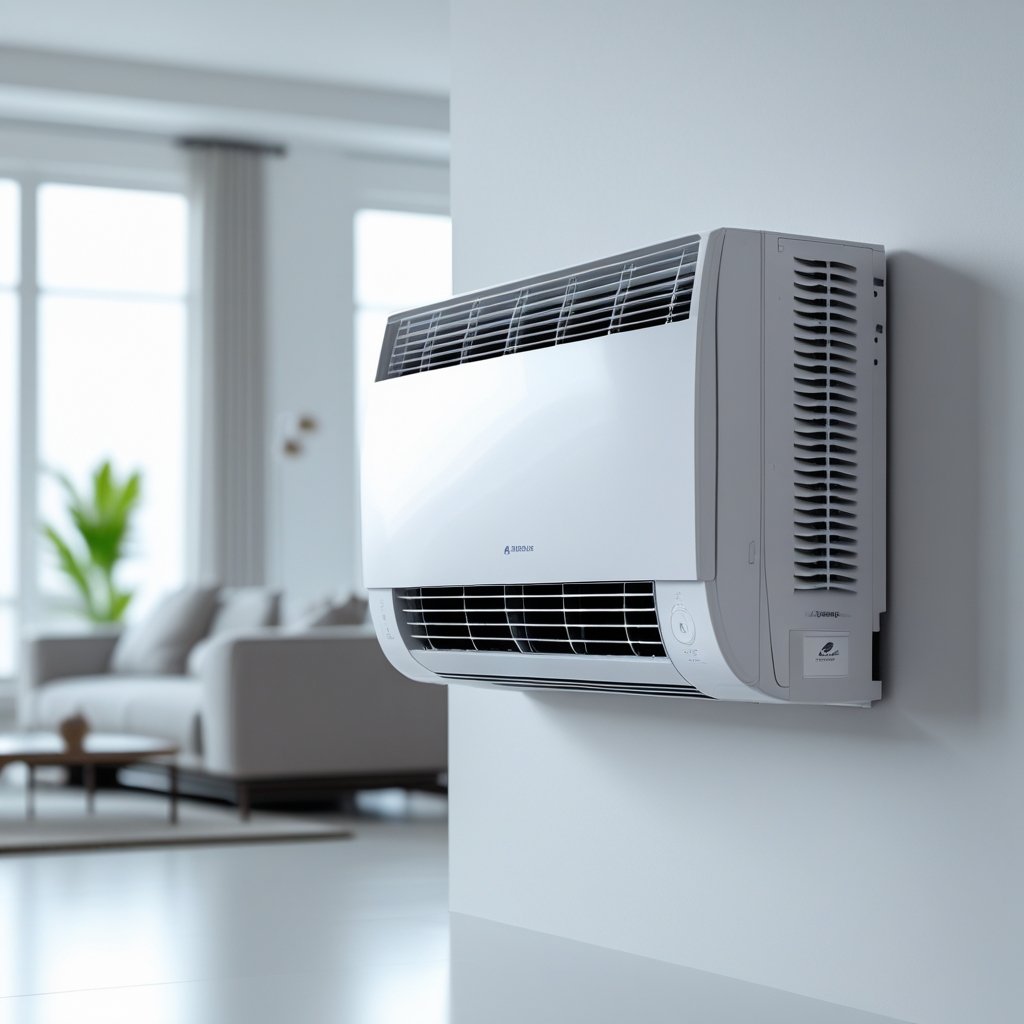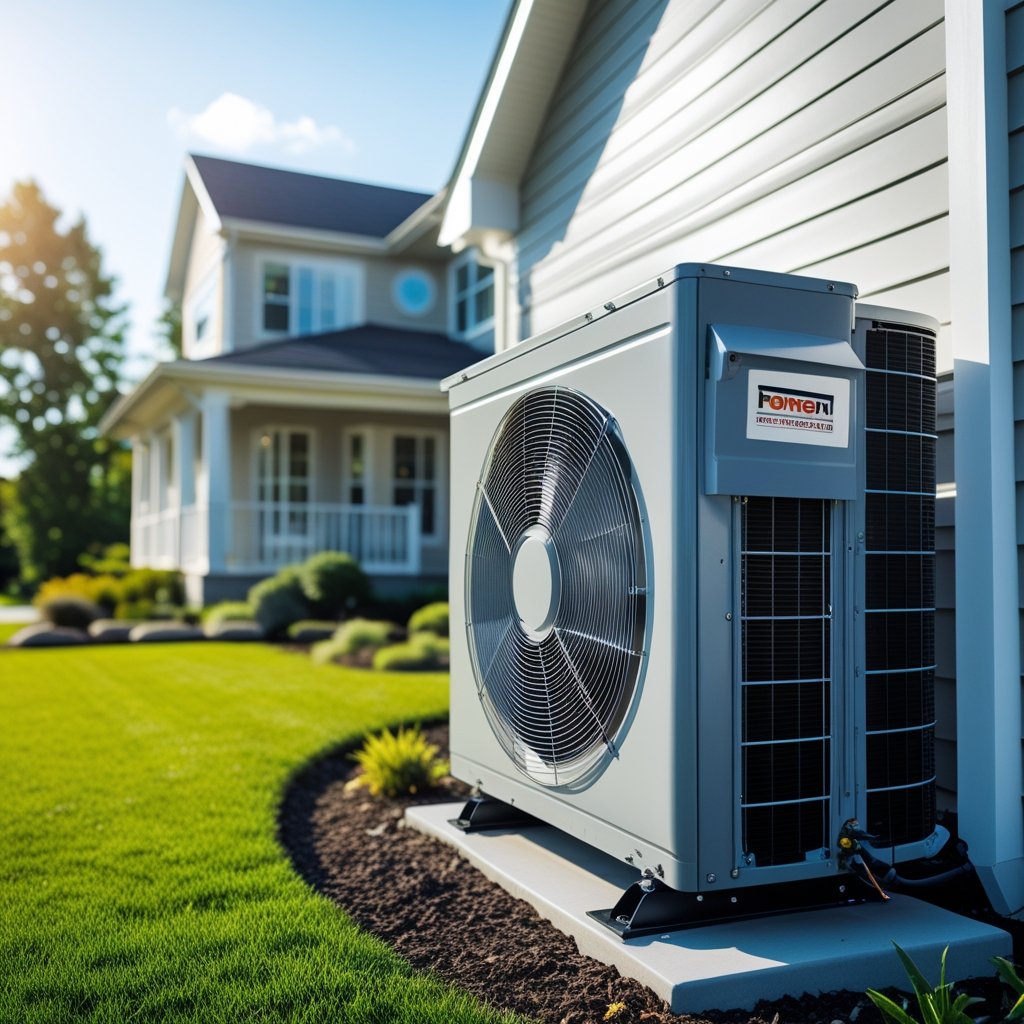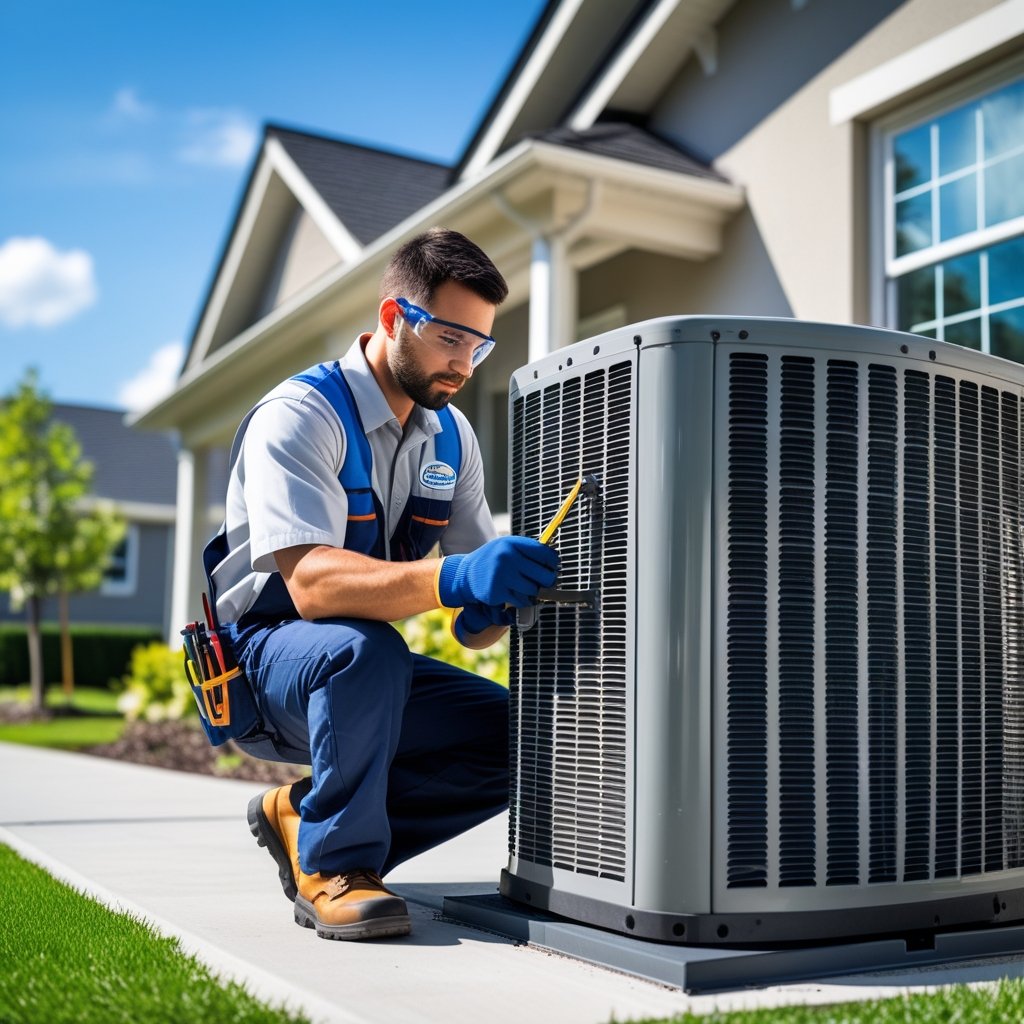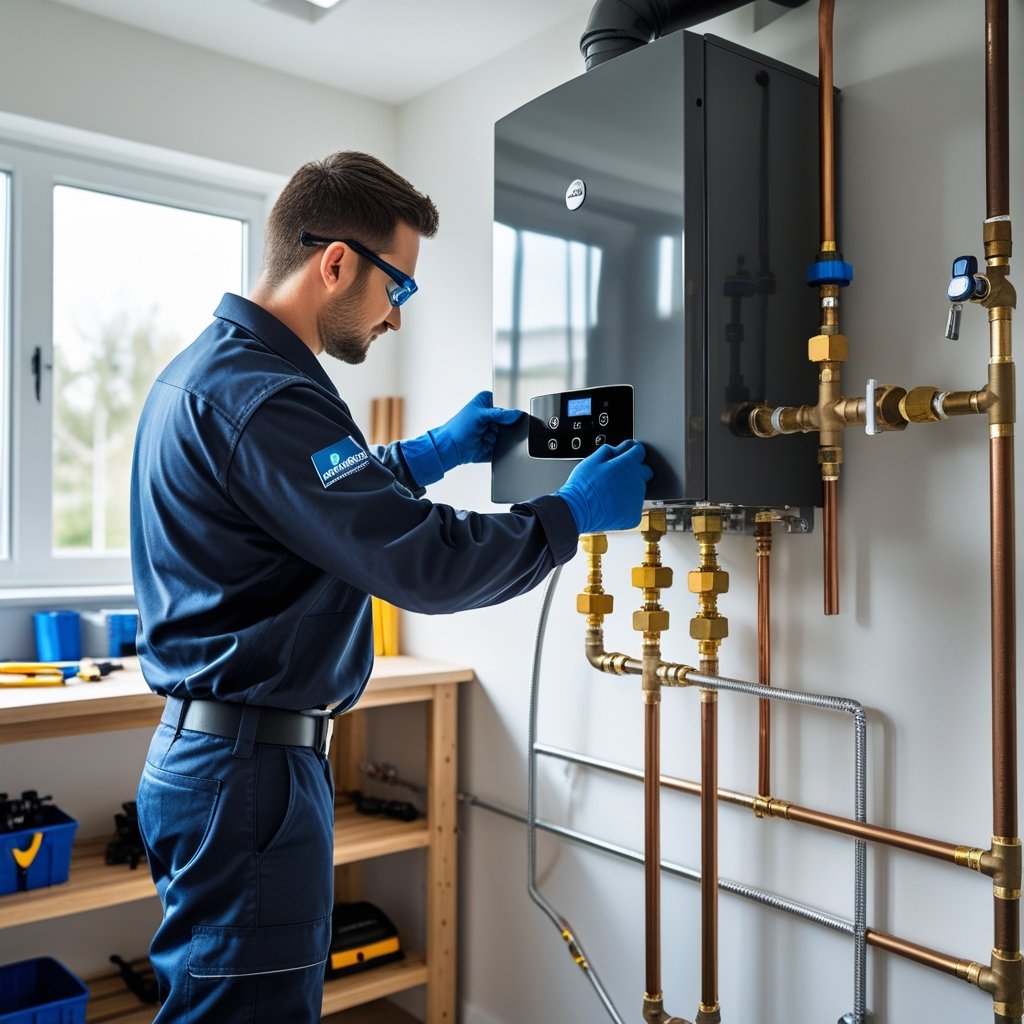Experiencing a furnace failure can be frustrating, especially during the colder months when you rely on it for warmth. Before you panic and call for a technician, there are several troubleshooting steps you can take to determine the issue and potentially fix it yourself. Simple checks, such as verifying the thermostat settings or ensuring there’s power to the unit, can make a significant difference.
If the problem persists, recognizing common issues like a faulty ignition or clogged air filters can guide you in finding a solution. Leo Kob Co. understands how important a functioning furnace is for your home comfort, and our team is here to help you navigate these problems efficiently.
Whether you need quick tips or a professional assessment, knowing what to look for can save you time and money. Don’t let a heater malfunction disrupt your comfort; take the first steps towards a resolution today.
Immediate Actions When Your Furnace Stops Working
When your furnace stops working, acting quickly can help identify the issue. Here are essential steps to troubleshoot the problem effectively.
Check Thermostat Settings
Start by verifying your thermostat settings. Ensure the thermostat is set to “heat” and that the desired temperature is higher than the room temperature. If it's programmable, check the schedule to confirm that it hasn't been inadvertently set to a lower temperature or "away" mode.
If your thermostat uses batteries, replace them if they are low. Sometimes, a malfunctioning thermostat can be the sole reason your heating system isn't operating. You may also want to clean any dust or debris around the unit to ensure accurate readings. If the thermostat appears faulty even after adjustments, it may need calibration or replacement.
Ensure Furnace Power Switch and Circuit Breaker Are On
Next, confirm that the furnace power switch is in the "on" position. This switch is commonly located near the furnace itself. If the switch is on but the furnace still doesn't function, check the circuit breaker.
Look for any tripped breakers—if you find one, reset it by turning it off and back on. If the breaker trips again, there might be a more serious electrical issue, and you should consult a professional. Keeping your electrical system in check is crucial to maintain efficient furnace operation.
Inspect Air Filters and Air Flow
Clogged air filters can restrict airflow, leading to furnace inefficiency or shutdown. Check the air filters and replace them if they are dirty or clogged. A clean filter ensures your system runs smoothly and can also contribute to better indoor air quality.
After replacing the filters, inspect the supply vents and return ducts for any obstructions. Ensure that there is nothing blocking air flow, as this can cause your furnace to overheat and shut off. Regular air filter maintenance is critical for your heating system's longevity.
Confirm Gas Supply and Gas Valve Position
If your furnace uses gas, check that the gas supply is turned on. Locate the gas valve near your furnace and ensure it is in the open position. If you suspect an issue with your gas supply, please contact your utility provider immediately for assistance.
You should also look for any unusual odors. If you smell gas, evacuate your home and call emergency services. Safety is paramount—never attempt to troubleshoot gas-related issues without professional help. Regular inspections by Leo Kob Co. can help ensure that your gas systems are functioning safely and efficiently.
Common Furnace Problems and DIY Troubleshooting Steps
Furnace issues can arise for various reasons. Understanding some common problems and applying straightforward troubleshooting steps can help you identify and resolve these issues quickly.
Pilot Light and Electronic Ignition Issues
When your furnace won't ignite, the pilot light may be out or there could be an issue with the electronic ignition system. To troubleshoot, check if the pilot light is lit; if not, follow the manufacturer’s instructions to relight it. Ensure the gas supply is on, as it can sometimes be inadvertently shut off.
For electronic ignitions, listen for a clicking sound, indicating an attempt to ignite. If there's no sound, inspect the ignitor for damage. A faulty ignitor or pilot thermocouple might need replacement. Regular checks during the heating season can prevent these issues from lasting too long. If troubleshooting doesn’t work, contacting Leo Kob Co. can ensure a professional inspection.
Dirty Flame Sensor or Thermocouple Malfunctions
A dirty flame sensor can prevent your furnace from operating correctly. If your system continually shuts off, this might be the culprit. To clean it, turn off the power and gently wipe the sensor with a fine sandpaper or cloth.
Similarly, a malfunctioning thermocouple can interrupt gas flow to the burner. This component monitors the pilot light and ensures that gas only flows when the flame is lit. If the thermocouple is damaged, replacing it is usually necessary. Regular maintenance is a smart approach to avoiding these sensor issues.
Clogged Filter and Restricted Air Flow
A clogged filter is among the most common culprits of furnace issues. When your filter is dirty, airflow becomes restricted, causing the furnace to overheat and shut down to avoid damage. Depending on usage, check and replace your filter every 1-3 months during the heating season.
When changing the filter, also ensure that air ducts are clear from obstructions. Good airflow is critical for efficient heating. A clean system not only operates better but also helps to prolong the life of your furnace. For those in South Central Pennsylvania, Leo Kob Co. offers comprehensive maintenance services to keep your HVAC systems running smoothly.
Faulty Control Board or Safety Switches
A furnace not responding might stem from a faulty control board or safety switches like the high limit switch or pressure switch. These components control the operation of your furnace and protect against overheating or gas leaks.
To troubleshoot, locate the control board and check for any visible damage or loose connections. Testing safety switches may require a multimeter, so if you're uncomfortable, it’s wise to call for professional help. Faulty components can lead to serious issues, and timely repairs can save you from major inconveniences later.
When to Call a Professional and What to Expect
It's essential to identify when it's time to bring in an HVAC technician for furnace repairs. Understanding the signs that indicate professional help is needed, along with knowing what to expect during the repair process, can save you time and prevent further issues.
Signs You Need HVAC Repair or Furnace Repair
You should consider professional assistance if your furnace is not turning on or if you notice unusual noises, such as banging or rattling. Additionally, if your home is not warming up evenly or if the heating cycles are excessive, these indicate potential furnace problems.
Another red flag is if your energy bills increase significantly without explanation, as this may suggest inefficiency. If you experience frequent on-and-off cycling, it's best to contact an HVAC technician. Catching these issues early can prevent costly repairs later on.
Choosing an Experienced HVAC Technician or Company
Selecting a qualified HVAC company is critical for effective furnace repairs. Look for a business with a solid reputation, like Leo Kob Co., which has been serving South Central Pennsylvania since 1904. Check for licensing, certifications, and customer reviews.
Ask for quotes and ensure there are no hidden fees. A trustworthy provider, such as Leo Kob Co., will give you clear pricing and options. It's beneficial to inquire about their experience with your specific furnace model. This can lead to a more efficient diagnosis and repair process.
What Happens During Furnace Repairs
During a repair visit, the technician will first conduct a thorough inspection of your furnace, checking for common issues like clogged air filters or electrical failures. After identifying the problem, they will explain the necessary repairs and provide an estimate.
You can expect the technician to work efficiently, minimizing disruption to your home. They will also discuss preventative maintenance options to extend your furnace's lifespan. Keeping your system well-maintained can prevent future breakdowns and ensure your home stays warm during colder months.
Preventative Maintenance for Reliable Heating
Maintaining your furnace is essential for consistent and reliable heating. Regular maintenance tasks help ensure that your heating system runs efficiently and can prevent major issues during the colder months.
Regular Furnace Maintenance Tasks
To keep your furnace in top condition, perform regular maintenance tasks. This includes checking the ignition system and burners, which should be clean and functioning optimally. Inspect all electrical connections to ensure they are tight and free from corrosion. Pay attention to the heat exchanger for any signs of wear or damage. Scheduling annual professional inspections can also help identify potential problems early. Leo Kob Co. offers comprehensive furnace maintenance services tailored to your needs, ensuring that your heating system remains efficient and safe for your home.
Changing Air Filters and Inspecting Blower Motor
Changing the air filters in your heating system is one of the simplest yet most important maintenance tasks. A dirty filter can restrict airflow, making your furnace work harder and reducing its efficiency. Ideally, you should replace or clean your filters every 1-3 months. Additionally, inspect the blower motor, as it is crucial for circulating warm air throughout your home. Keep the area around the motor clear of dust and debris. Regular checks can prevent issues that lead to breakdowns. Maintaining clean air filters and a well-functioning blower motor ensures your heating system operates smoothly.
Detecting and Fixing Leaky Ducts
Leaky ducts can significantly hinder your heating system's efficiency, leading to uneven temperatures and increased energy costs. To address this, inspect your ductwork for visible gaps, cracks, and loose connections. Sealing these leaks with duct tape or professional sealants can dramatically improve efficiency. It's also beneficial to ensure that your ducts are properly insulated, especially in unconditioned spaces. By addressing leaky ducts, you enhance the system's performance and reduce energy waste. For professional assistance, consider consulting Leo Kob Co., where we prioritize your comfort and energy savings in South Central Pennsylvania.
Understanding Your Furnace and Fuel Types
Understanding the type of furnace you have and the fuel it uses is crucial for effective troubleshooting. Different fuel types affect efficiency and operation. Familiarity with the components will help in diagnosing issues more accurately.
Differences Between Gas Furnace, Propane, and Natural Gas
Gas furnaces typically use either propane or natural gas as fuel. Natural gas is delivered through pipelines and is often more economical in urban areas. It burns cleanly, producing less pollution. In contrast, propane is stored in a tank and is common in rural areas without gas lines. While propane can be more expensive, it offers a higher energy content, meaning it can heat your home more effectively.
Consider the heating season; for those in varying climates, understanding which fuel source is better for efficiency and availability can lead to cost savings.
Identifying Furnace Components and Their Functions
A gas furnace has several critical components that work together to provide heat. Key components include the thermostat, which senses the temperature and signals the furnace to turn on, and the burner, where the fuel combusts to produce heat. The heat exchanger then transfers that heat to the air circulating in your home.
Regularly checking these components is essential to maintaining efficiency. A malfunctioning thermostat can lead to temperature fluctuations, while a dirty filter can restrict airflow and increase energy costs.
Noisy Furnace and Other Warning Signs
A noisy furnace can indicate underlying issues that require attention. Common sounds include banging, which might signal loose or damaged parts, and whistling, pointing to airflow restrictions. Keeping an ear out for these noises can help you catch problems early.
Additionally, be alert for unusual odors or increased energy bills, as these can be signs that your furnace needs servicing. If troublesome noises persist, contacting a professional, like Leo Kob Co., can ensure your system runs smoothly. Regular maintenance can extend the life of your furnace and enhance its performance.
Safety Considerations and Emergency Issues
Ensuring the safety of your home is crucial when your furnace is not working properly. It's important to recognize potential hazards such as gas leaks and electrical issues. Taking immediate action can prevent serious risks to you and your family.
Recognizing Signs of a Gas Leak
If you suspect a gas leak, act quickly. Natural gas is odorless, but a chemical scent similar to rotten eggs is added for detection. Other signs include:
- A hissing or whistling sound near the furnace
- Dead or withered vegetation around your home
- Unexplained headaches or dizziness among household members
In case of a gas leak, do not use electronic devices or switches, as they could ignite the gas. Evacuate your home immediately and call your local utility company or emergency services for assistance. If you encounter such issues frequently, consider contacting professionals like Leo Kob Co. for a thorough inspection of your heating system.
Responding to Electrical or Gas Emergencies
If your furnace has stopped working, first check the furnace power switch to ensure it is on. If everything seems in order, and you still experience issues or detect a gas odor, follow these steps:
- Turn Off the Gas Supply: Locate the shutoff valve for your natural gas and turn it off.
- Evacuate Everyone: Get all household members and pets out of the house immediately.
- Avoid Flames: Do not light matches or use any open flames.
- Call for Help: Contact emergency services or a qualified HVAC technician who can safely address the issue.
Taking these steps will help ensure your safety and the safety of those around you. If you need assistance, Leo Kob Co. is here to provide emergency support and repairs.
Frequently Asked Questions
When your furnace stops working, several specific issues could be at play. Understanding these common problems can help you troubleshoot effectively and determine the best course of action. Here are some frequently asked questions related to furnace issues.
Why is my thermostat indicating heat is on when the furnace is not running?
This can happen if your thermostat is malfunctioning or miscalibrated. If the thermostat is set to "heat" but the furnace does not respond, it might be a wiring issue or a dead battery. Check your thermostat for proper settings and replace the batteries if needed.
What should I do if my furnace stopped working suddenly overnight?
First, check the thermostat settings and ensure it is calling for heat. Next, inspect your circuit breaker to see if the furnace’s power supply has been interrupted. Look for any obvious signs of issues, such as leaks or strange noises, which may indicate a more significant problem that could require professional attention.
What are common reasons for a furnace to stop turning on?
Several common issues can prevent a furnace from turning on. These may include clogged air filters, a malfunctioning ignition system, or an empty fuel tank. Regular maintenance can help you avoid many of these problems. Consider calling a professional from Leo Kob Co. for comprehensive inspections.
How do I troubleshoot a furnace that is not responding to the thermostat?
Start by ensuring that the thermostat is set to "heat" and the desired temperature is above the current room temperature. Check if the wires are connected properly. If possible, test the thermostat by bypassing it to see if the furnace starts up when directly powered.
What steps can I take to troubleshoot a gas furnace that won't start?
Begin with confirming that the gas supply is on and the gas valve is not closed. Next, inspect the ignition system; see if the pilot light is lit or if the electronic ignition is functioning. A dirty filter can also hinder operation, so replace it if it looks clogged.
Why isn't my furnace turning on automatically as it should?
This issue could stem from thermostat problems, failed components within the furnace, or even issues with the gas supply. Check the settings on your thermostat and ensure that it is functioning correctly. If the problem persists, consulting an expert from Leo Kob Co. may provide you with the necessary insights.

